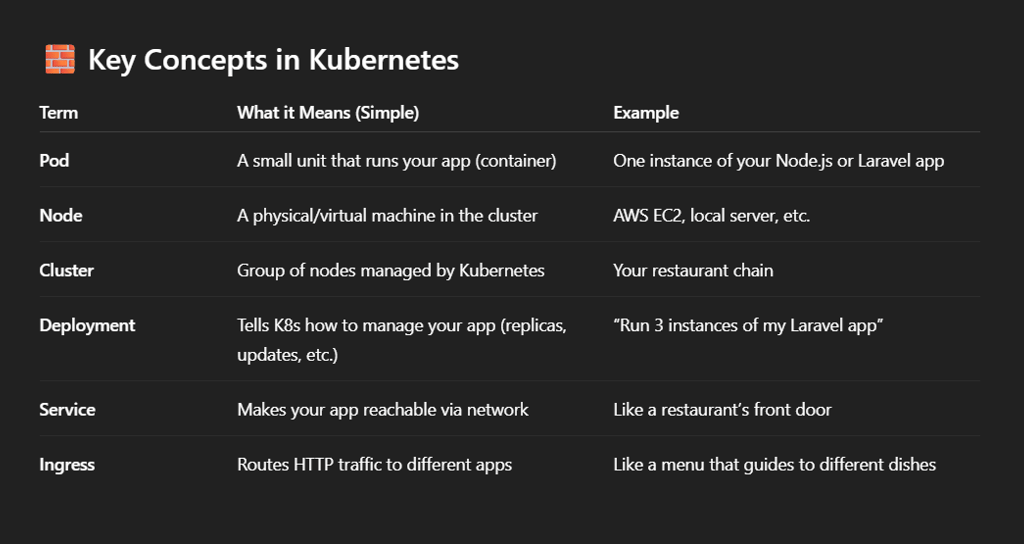What is Kubernetes?
Kubernetes (often called K8s) is an open-source system that helps you automate the deployment, scaling, and management of containerized applications. Think of it as a robot manager for your servers and Docker containers.
Vivek
5/31/20252 min read
🛠️ Kubernetes Explained with example
Kubernetes is like a factory manager for apps.
It takes care of:
Where to run them
How many to run
What to do if one crashes
When to stop or restart
🍕 Example 1: Pizza Delivery Kitchen
Imagine you run a pizza delivery business with multiple kitchens across the city.
💡 Here's the setup:
Each kitchen = a computer/server
Each pizza = an app
The chef = a Docker container (a packaged app)
You (the owner) = Kubernetes
✅ What you (Kubernetes) do:
Decide which kitchen makes which pizza (deployment)
Make sure every pizza is made correctly and on time
If one kitchen’s oven breaks, you shift pizza making to another
During rush hour, you hire more chefs to handle more orders (auto-scaling)
If a chef burns a pizza, you replace them instantly (self-healing)
You also track which pizza went where (network routing)
🚌 Example 2: School Bus System
Imagine you're managing a city-wide school bus system.
🚌 Here's the situation:
Each bus = a server
Each group of students = an app
You (Kubernetes) = the transport manager
You ensure:
Students (apps) get on the right bus (server)
No bus is overcrowded (load balancing)
If a bus breaks down, you send another one instantly
If a route becomes busy, you send extra buses (auto-scaling)
If fewer students today, you reduce the number of buses (scale down)
Kubernetes is doing all of this automatically — based on your instructions.
🏭 Example 3: Factory Assembly Line
Imagine a factory making phones.
Machines = servers
Workers = containers (apps)
You = the factory manager (Kubernetes)
You:
Assign workers to available machines
Make sure production continues even if one machine fails
Hire more workers when demand increases
Train or replace workers if they do something wrong
Kubernetes is like a 24x7 intelligent factory manager — ensuring smooth operations.
⚙️ How Kubernetes Works
You write a deployment YAML file (or use a command)
Kubernetes schedules the app (container) on available servers
It watches and maintains the desired state:
App is running
Right number of instances
Restart if crashed
🚀 Example Use Case: Deploying a Laravel App
Dockerize your Laravel app
Push it to a container registry (Docker Hub, ECR)
Create Kubernetes Deployment and Service YAMLs
Use kubectl apply -f deployment.yaml to deploy
Kubernetes schedules and runs your Laravel containers on available nodes
✅ Why Use Kubernetes?
🔄 Self-Healing – Restarts crashed apps
📈 Auto-Scaling – Adds/removes app instances based on traffic
🔁 Rolling Updates – Update apps without downtime
☁️ Cloud-Agnostic – Works on AWS, Azure, GCP, or your own servers
Final Thoughts
Kubernetes is like a powerful manager for your containerized applications. While it has a learning curve, once you get used to it, you can deploy, scale, and manage applications effortlessly — just like big companies (Netflix, Spotify, Google) do.

